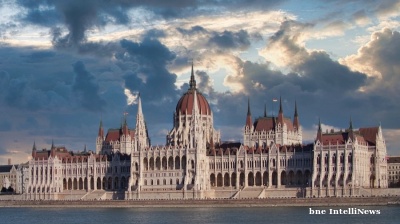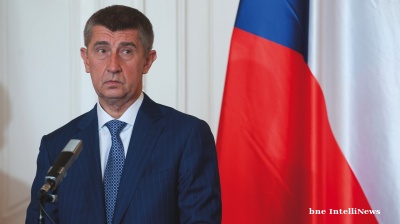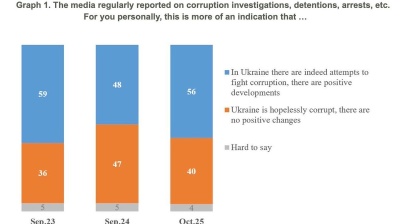Vladimir Putin is at it again, playing on Western nerves with talk of modifications to Russia's nuclear doctrine to open up more options for the use of nuclear weapons. Outside commentary is largely divided between regarding it as a serious threat and an act of intimidatory rhetoric, but there is also another dimension to this move, which suggests that Moscow is edging towards some sense of an endgame in Ukraine.
At the Security Council meeting of September 25, Putin announced that the Basic Principles of State Policy on Nuclear Deterrence, originally adopted in 2020, would be revised, following a period of consideration that began in June. In particular, he stated that close allies – presumably including Union State partner Belarus – would also come under the protection of Russia's nuclear umbrella and that the conditions for nuclear use would be expanded.
Whereas previously these were either a hostile first strike or a conventional attack which posed an existential threat to the state, Putin suggests now that a massive air and space attack including missiles and drones (which could, after all, carry nuclear warheads) would come under the definition of a potential first strike. Perhaps more interestingly, a serious attack by a state without nuclear weapons, yet with the participation or support of a nuclear state, could be considered a joint attack and face suitable retaliation. It is pretty clear that he has a US-backed Ukraine in mind.
Is this really a major shift? The first point to note is that the doctrine reflects the baseline thinking of the Russian state but that it is unlikely in itself to constrain Putin¡s actions. He would not launch or stop an attack just because his doctrine says so. To a considerable extent, this is likely just one more information operation. He knows perfectly well that the West takes notice when he talks nukes, and that some constituencies become alarmed and again start agitating for an end to the war, lest the hostilities spiral out of hand. Considering that at present Washington is still mulling the request to allow Kyiv to use its ATACMS missiles, as well as Anglo-French Storm Shadow/SCALP systems against targets deeper inside Russia, he may have felt this an opportune moment to stir the pot.
That said, he could have had the same political impact simply with a stray comment. He did not have to initiate a revision of the nuclear doctrine document, something which has consumed considerable effort within the Defence Ministry, General Staff and Security Council Secretariat. This is more than just another bit of sabre-rattling.
Is it that he fears some kind of nuclear attack on the Motherland, or that a US-backed Ukraine could mount some serious invasion of Russia on a vastly greater scale than the Kursk incursion? Unlikely. Indeed, if anything Putin has often been more cautious and conservative than the letter of law and doctrine would imply. Although four regions of Ukraine were formally annexed in September 2022, for example, Putin – for entirely self-interested political reasons, to be sure – has not sent conscripts to fight in the Donbas, even though that would be legal, albeit it deeply unpopular.
Furthermore, this does nothing to bring closer the threat of the use of a non-strategic nuclear weapon (NSNW) either against Ukraine or as a demonstrative threat. There are serious practical considerations. All Russia's NSWS have sat in armouries for the past 25 years and would need to be reconditioned before being mated to their delivery system. There would also almost certainly need to be a test detonation before any use in anger, and given that even the hypersonic Kindzhal, once touted as impossible to intercept, has proven vulnerable to Patriot air defence systems, Moscow would presumably have to launch multiple missiles to get through. That is, of course, assuming there was a viable target. Ukraine does not mass its forces in such a way to provide a logical target, while striking a city would be considered a massive escalation and an unjustifiable war crime across the world.
Instead, insofar as this latest edit of the doctrine has any serious meaning in the context of the Ukraine war, it may be preparing the ground for some post-ceasefire future. Moscow will presumably try to freeze its control of around a fifth of Ukraine, drawing out any negotiations which would in any case be unlikely to reach some resolution. If left in control of the Donbas, Crimea and the Zaporizhzhian 'land bridge' to the peninsula, Putin would likely be quite happy to take that as a win, even while reserving the option of resuming hostilities at some point in the future if the correlation of forces looked favourable.
In the meantime, he would want to deter any attempt by Kyiv to take back the occupied territories. Garrisons, trenches and minefields are all very well, but the prospect that Moscow might consider an attack by a US-backed Ukraine as potential grounds for a nuclear response might make Kyiv hesitate but, rather more likely, will weigh on the minds of America's leaders, whoever they may be by then. The implications is that Moscow is seriously believing that a ceasefire may be on the horizon, whether because of US pressure or Ukrainian exhaustion.
Opinion

COMMENT: Hungary’s investment slump shows signs of bottoming, but EU tensions still cast a long shadow
Hungary’s economy has fallen behind its Central European peers in recent years, and the root of this underperformance lies in a sharp and protracted collapse in investment. But a possible change of government next year could change things.

IMF: Global economic outlook shows modest change amid policy shifts and complex forces
Dialing down uncertainty, reducing vulnerabilities, and investing in innovation can help deliver durable economic gains.

COMMENT: China’s new export controls are narrower than first appears
A closer inspection suggests that the scope of China’s new controls on rare earths is narrower than many had initially feared. But they still give officials plenty of leverage over global supply chains, according to Capital Economics.

BEYOND THE BOSPORUS: Consumed by the Donald Trump Gaza Show? You’d do well to remember the Erdogan Episode
Nature of Turkey-US relations has become transparent under an American president who doesn’t deign to care what people think.




